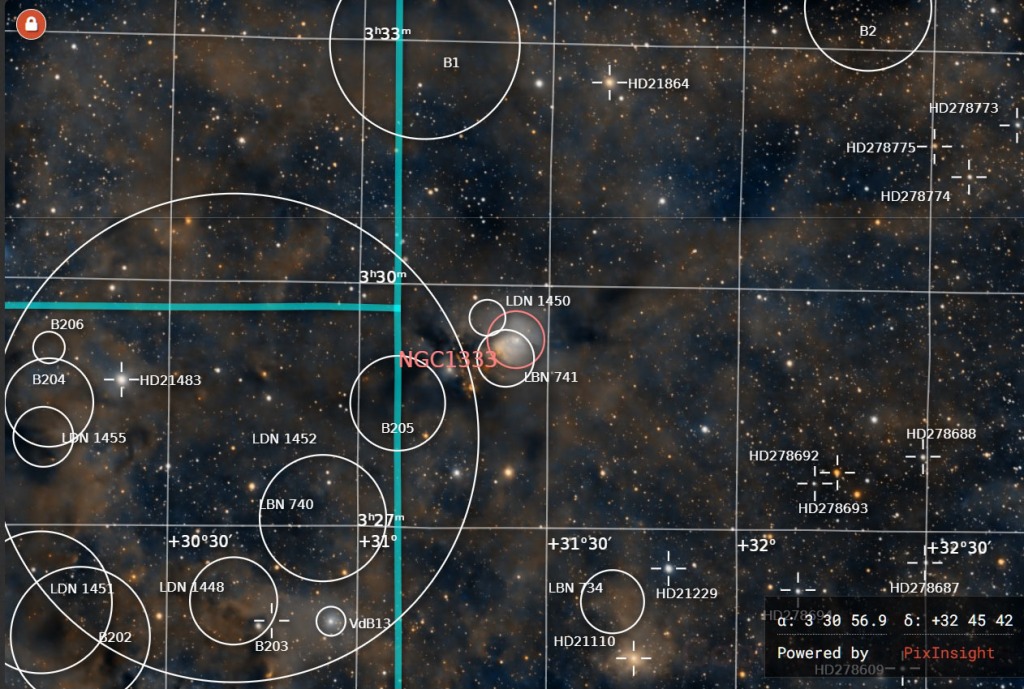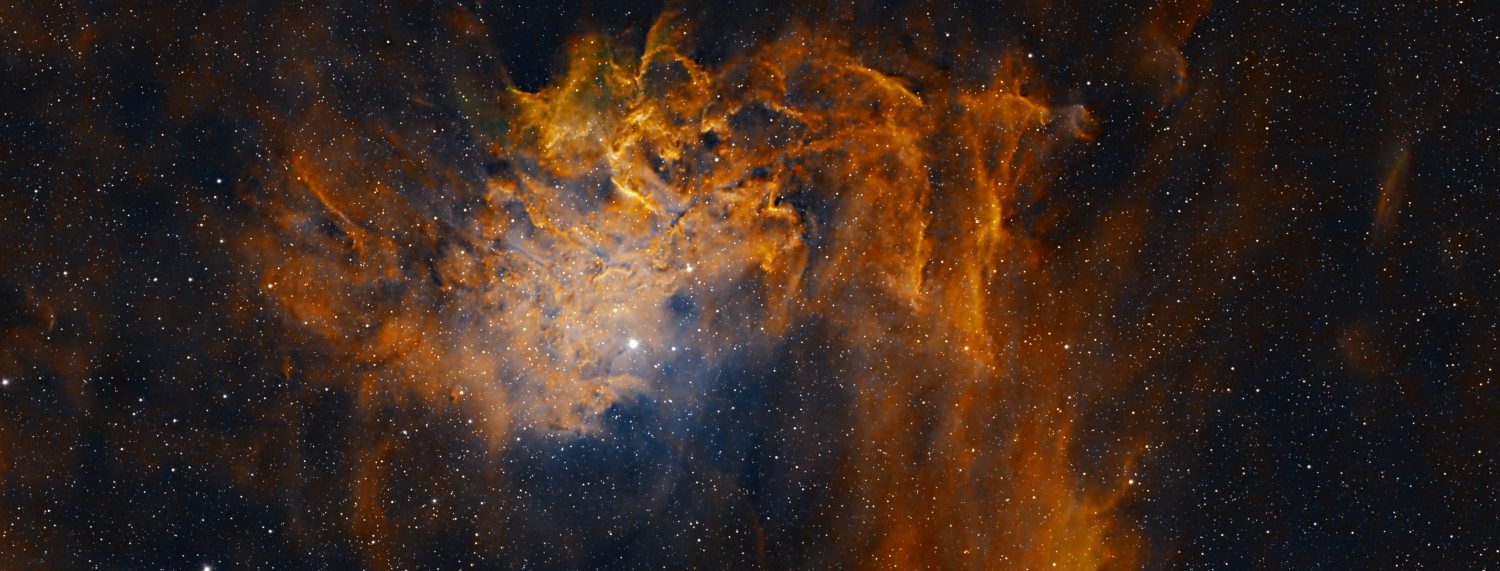
Nestled within the western area of the Perseus Molecular Cloud, some 1,100 light-years from Earth is the colourful NGC 1333 complex, one of the closest and most active stars forming regions of the night-sky. I have long admired this exciting object but ruled it out for imaging as unsuitable for my equipment but eventually found its allure too compelling to avoid and just had to give it a try, with a surprisingly good result.

NGC 1333 shows details of dusty regions along with contrasting hints of red emissions from Herbig-Haro objects(1), jets and shocked glowing gases emanating from recently formed stars. In fact, the reflection nebula NGC 1333 contains hundreds of stars less than a million years old, mostly hidden from view by the prevailing dust.

Whilst NGC1333 is clearly the main act, numerous exciting objects abound throughout this complex region, including other reflection nebulae and Herbig-Haro stars, some of which which can be seen highlighted in the plate solving annotation above. However, I’m most pleased that for the first time at this Bortle 5 / 6 area I’ve been able to capture the extensive interstellar dust and gases, which really brings the entire image to life – every cloud has a silver lining. I am blown away by the outcome of this image, in the light of which I’ll need to reassess other hitherto neglected targets.
- (1) Wikipedia: Herbig–Haro (HH) objects are bright patches of nebulosity associated with newborn stars. They are formed when narrow jets of partially ionised gas ejected by stars collide with nearby clouds of gas and dust at several hundred kilometres per second.
Final Word: as always, good quality data is the critical factor for all astrophotogaphy images but processing comes a close second in importance and is something I’m continually working on. This time I was able to use two new PixInsight features that were released shortly before Christmas and played an important role in completing the final image – thanks Santa.
Spectrophotometric Colour Calibration (SPCC) – based on results of the Gaia satellite’s work creating a three-dimensional map of our Galaxy, the Milky Way, SPCC usess the astrometric data (location) of all the stars and their related spectrometric data to accurately colour calibrate the image. This is an incredible piece of work that ensures that astrophotography objects, especially broadband wavelengths, can now be properly shown in their correct colours.
Blur XTerminator (BXT) – as astonishing as SPCC is, perhaps the real game changer is Russell Croman’s BXT, which literally does what it says on the tin, very, very well, and is causing something of a riot in the world of astrophotography. Like his other PixInsight tools NoiseXTerminator and StarXTerminator (also very popular), BXT is AI based with truly unbelievable results. The removal of blur, without damaging the image integrity at a pixel level, vastly improves the image quality – significantly improving the effective image resolution, which is like transforming your telescope to a more powerful, higher quality one!
| IMAGING DETAILS | |
| Object | NGC1333 |
| Constellation | Perseus |
| Distance | 1,100 light-years |
| Size | 6’ x 3’ |
| Apparent Magnitude | +5.6 |
| Scope | William Optics GT81 + Focal Reducer FL 382mm f4.72 |
| Mount | SW AZ-EQ6 GT + EQASCOM computer control & Cartes du Ciel |
| Guiding | William Optics 50mm guide scope |
| + Starlight Xpress Lodestar X2 camera & PHD2 guiding | |
| Camera | ZWO ASI294MM CMOS sensor |
| FOV 2.87o x 1.96o Resolution 2.50”/pix Max. image size 4,144 x 2,822 pix | |
| EFW | ZWOx8 EFW & 31mm Chroma LRGB filters |
| Capture & Processing | Astro Photography Tool + PHD2 + Deep Sky Stacker, PixInsight v1.8.8-7, Photoshop CS3, Topaz Denoise |
| Image Location & Orientation | Centre = RA 03:29:16.792 DEC +31:25:33.388 Right = North Top = East |
| Exposures | L x50 R x41 G x43 B x43 x180 sec Total Integration Time: 8hr 51 min |
| @ 120 Gain 30 Offset @ -15oC | |
| Calibration | 10 x 180 sec Darks + 15 x LRGB Flats & Dark Flats @ ADU 32,000 |
| Location & Darkness | Fairvale Observatory – Redhill – Surrey – UK Typically Bortle 5-6 |
| Date & Time | 25th November + 15th & 16th December 2022 @ +18.30h |
| Weather | Approx. < -1oC RH >=85% 🌙 -40% waning |
